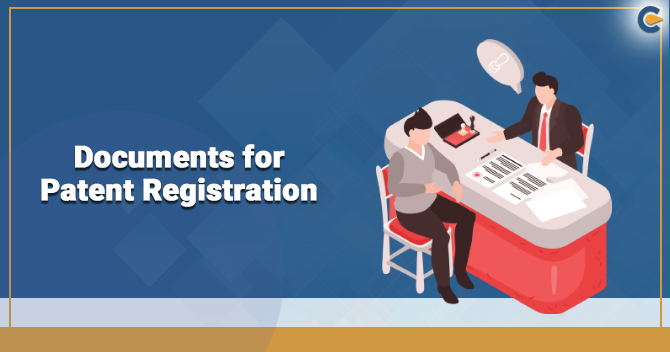Patents are a crucial instrument for encouraging innovation, safeguarding financial investments, and boosting the economy. They support the spread of knowledge that sparks additional innovation and give enterprises and inventors the sole right to produce, use, and sell their innovations. By giving businesses and inventors the motivation and resources to spend on R&D, patents play a crucial part in fostering innovation and economic progress. Patents offer a mechanism to monetize inventions while also protecting the time and resources used to develop new goods, services, and technologies. By requiring inventors to include all of the specifics of their invention in the patent application, patents also aid in the sharing of information. This disclosure makes it possible for others to benefit from and build upon the idea, encouraging more creativity and advancement. Scroll down to check more information regarding International Patent Registration.
What is International Patent Registration?
An inventor or business can legally get patent rights for their invention in several nations outside of their home country by registering an international patent. They can use it to stop others in the countries where the patent is registered from making, using, or selling their invention without their consent. For businesses and inventors who wish to grow internationally or market their ideas there, international patent registration is crucial. In contrary to national patents, international patent registration permits applicants to submit a single patent application that can subsequently be utilized to obtain patent protection in many nations simultaneously. This can speed up and reduce the cost of the patent registration procedure. Moreover, international patent registration may provide better legal certainty, as it might lessen the danger of conflicting patent rights in multiple nations.
Importance of Filing Patents Abroad
For businesses and inventors who want to grow their markets and safeguard their intellectual property (IP) rights, filing patent applications internationally is crucial. The ability to stop competitors from making, utilizing, or selling the invention without authorization in foreign nations where the patent is awarded is one of the many advantages of submitting patents abroad. This might give the inventor a competitive edge in international marketplaces and help to secure their market position. Additionally, by giving inventors the opportunity to sell or license their patent rights to companies doing business abroad, registering patents abroad can help innovators maximize the commercial potential of their inventions.
Additionally, worldwide patent registration can assist in limiting infringement because it provides an indication to potential infringers that the inventor is committed to protecting their intellectual property rights. Finally, by guaranteeing that the inventor’s patent rights are recognized and enforceable in other nations, filing patents abroad can offer legal protection and aid to prevent expensive lawsuits. In general, foreign patent filing is an essential strategy for businesses and inventors that want to secure their intellectual property and thrive in international markets.
Benefits of International Patent Registration
- Offers international protection to the invention.
- By expanding the market, the invention’s commercial worth is increased.
- Gives a stronger negotiating position when negotiating licenses with prospective partners or investors.
- Prevents rivals from violating the patent across numerous markets.
- Saves money and time by avoiding the need to file individual patent applications to several nations.
- By demonstrating that your idea is acknowledged on a global level, it gains more credibility.
- Offers an expedited procedure for patent prosecution and examination.
- Boosts the likelihood of gaining stronger patent protection across several markets.
- Enables a consolidated mechanism for managing patent portfolios.
Offers chances for international relationships and collaboration.
Factors to Consider before Filing International Patent Registration
There are a number of things to take into account before applying for international patent registration, including:
- The price of acquiring and maintaining a patent across numerous nations.
- The degree of security provided by international patent registration.
- The process’ complexity, as international patent registration can be trickier than domestic patent registration.
- The potential markets for your invention and their likelihood to be commercialized.
Patent Cooperation Treaty (PCT)
The Patent Cooperation Treaty, also known as PCT, is an international patent law treaty that offers a streamlined procedure for filing patent applications across numerous countries. Patent Cooperation Treaty (PCT) was concluded in 1970, and it has 157 members currently. The Patent Cooperation Treaty is also open to the states which are party to the Paris Convention for the Protection of Industrial Property. A patent application can be filled out through a single patent office under the PCT. The PCT offers a quick and affordable procedure for filing international patents, making it an efficient tool for inventors and businesses looking to protect their discoveries across many jurisdictions. Before filing for an international patent registration, the inventor must ensure that the invention is eligible for registration, i.e. the invention is novel, non-obvious and has industrial application.
The Patent Cooperation Treaty includes the following steps:
- Filing an Application – The first step is to file an application for international patent registration. This application is filed with a regional or national patent office or WIPO[1]. This application serves as a basis for international patent applications. The application should be complied with PCT requirements and be in one language. The fees of one set are paid.
- International Search – After the filing of the application, an international search report is generated, which will identify any prior art which can impact the patentability of the invention which is applied. A written opinion is then established on the invention’s patentability.
- International Publication – After the completion of 18 months from the priority date, the details of the international patent application are disclosed.
- Supplementary International Search (Optional)
- International Preliminary Examination (Optional) – This examination provides a detailed analysis of the patentability of your invention.
- National Phase – After the international phase, you will need to enter into the national phase in each country where you want to seek patent protection.
Difference between International and National Patent Registration
The extent of patent protection, the number of nations covered, and the registration procedure is the primary distinctions between international and national patent registration. Contrary to international patent registration, which enables an inventor to gain patent protection in numerous countries simultaneously, national patent registration only offers patent protection inside the borders of the country in which the invention is granted.
Both international and national patent registration has different levels of protection. With national patents, the inventor must file a separate application for patent protection in each nation where they want to protect the patent. As opposed to national patents, international patents enables an inventor to jointly get patent protections in a number of nations, with the potential for extended patent protection.
Both the national and international patent registration processes have different procedures. A patent application must be filed with the patent office of the nation where the inventor desires to get patent protection in order to register a national patent.
Furthermore, national patent registration is governed by each country’s unique laws and rules, which can differ significantly. International agreements that provide a standard set of policies and procedures for patent registration across numerous nations regulate international patent registration.
Conclusion
In conclusion, registering an international patent can be a complex and drawn-out procedure, but it is frequently essential for firms and inventors that want to safeguard their intellectual property rights across numerous nations. It is essential for success to comprehend the procedures involved in submitting an international patent registration, including evaluating eligibility, selecting a route, putting up an application, and beginning the national phase. The Patent Cooperation Treaty (PCT), which offers a standardized mechanism for submitting patent applications, looking up previous art, and reviewing applications, is a helpful instrument for streamlining the worldwide patent registration process. Working with an experienced patent lawyer is essential to ensuring successful foreign patent registration. They can guide you through the convoluted procedure and advise you on the most effective course of action for defending your intellectual property rights.











